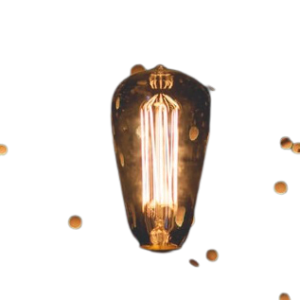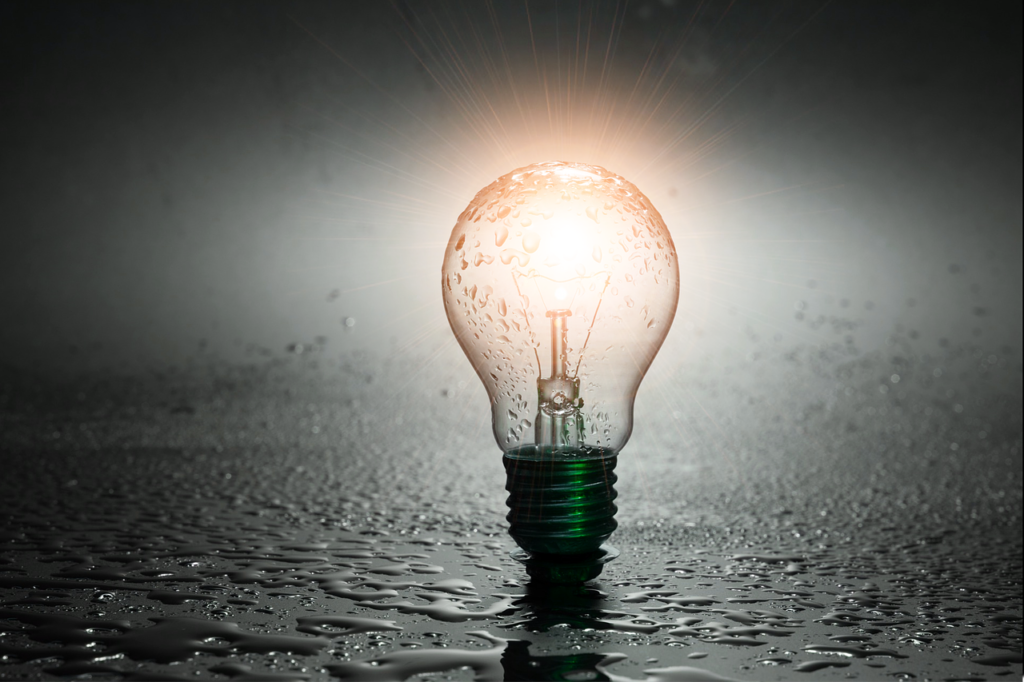When it comes to lighting options for our homes, halogen bulbs have been a popular choice due to their brightness and versatility. However, it is essential to understand the implications of using a higher wattage halogen bulb than what is recommended for a specific fixture or lamp.
In this article, we will delve into the factors you should consider when contemplating the use of a higher wattage halogen bulb, discussing the potential risks and benefits involved.
Table of Contents
What Are Halogen Bulbs?
Halogen light bulbs work by passing an electrical current through a gas, which is usually mercury. When the electricity passes through the gas, the mercury glows.

How Do Halogen Bulbs Work?
Most modern lights use a ballast. It’s the electronic part that controls how much current is sent through the filament. There are two types of ballasts – magnetic and electronic.
Halogen bulbs have a magnetic ballast and use less electricity than incandescents, so you can use a higher wattage without overheating your home.
Are Halogens Safer?
The higher wattage does mean you have to use more electricity, so they aren’t always safer than regular bulbs. However, the difference is that you don’t have to worry about an explosion in your home if you use them correctly.
Wattage and Its Significance
Wattage is a measure of the amount of energy consumed by a bulb. It determines the brightness and the amount of heat produced. In general, higher wattage bulbs emit more light, but they also consume more energy and generate more heat. It’s essential to understand the wattage rating of a bulb before using it in your lighting fixtures.
Can I Use a Higher Wattage Halogen Bulb?
While it may be tempting to use a higher-wattage halogen bulb to achieve brighter illumination, it is generally not recommended. Halogen bulbs are designed to operate within a specific wattage range for optimal performance and safety. Exceeding the recommended wattage can lead to various issues and potential hazards.
Implications of Using a Higher Wattage Halogen Bulb
While it may be tempting to use a higher wattage halogen bulb to achieve brighter illumination, it’s essential to consider the implications. Let’s explore some of the potential consequences of using a bulb with a wattage higher than recommended:
Overheating
Using a higher wattage bulb can cause excessive heat buildup within the fixture. This can lead to overheating, which poses a risk of melting or discoloration of surrounding materials, such as lampshades or fixtures made of plastic or other heat-sensitive materials.
Reduced Lifespan
The increased heat generated by a higher wattage bulb can significantly reduce its lifespan. Halogen bulbs are known for their relatively short lifespan compared to other lighting options. By using a higher wattage bulb, you further shorten its lifespan, resulting in frequent bulb replacements and added costs.
Fire Hazard
One of the most significant risks of using a higher wattage halogen bulb is the potential for fire hazards. When a fixture is subjected to excessive heat for an extended period, it can ignite nearby flammable materials, leading to a dangerous fire situation.
Electrical Damage
Exceeding the recommended wattage can strain the electrical components of the fixture, potentially causing damage to the wiring, sockets, or other parts. This can result in malfunctions or even complete failure of the lighting system.
Choosing the Right Bulb Wattage
To ensure optimal safety and performance, it’s crucial to choose the right wattage for your halogen bulbs. Here are some steps to help you determine the appropriate wattage:
Check the Fixture’s Rating
Inspect the fixture to locate its wattage rating. This information is often imprinted on the fixture or mentioned in the user manual. Ensure that the wattage of the bulb you choose falls within the recommended range.
Consider Light Output
Instead of using a higher wattage bulb, you can opt for bulbs with higher lumens to achieve brighter lighting. Lumens indicate the brightness of the bulb, and by selecting a bulb with a higher lumen output, you can achieve the desired illumination without compromising safety.
Consult a Professional
If you are unsure about the appropriate wattage for your lighting fixture, it’s always best to consult a qualified electrician or lighting specialist. They can provide expert guidance tailored to your specific needs and ensure a safe and efficient lighting setup.

Comparing Halogen Bulbs and Incandescent Bulbs
Energy Efficiency
In terms of energy efficiency, halogen bulbs clearly outperform incandescent bulbs. Their ability to produce more light while consuming the same amount of energy makes them a more sustainable lighting option.
Light Quality
Incandescent bulbs are known for their warm and cozy light, which is favored by many individuals. However, halogen bulbs offer a whiter and brighter light, similar to natural daylight. The choice between the two depends on personal preference and the desired atmosphere of the space.
Lifespan and Maintenance
When it comes to lifespan, halogen bulbs have a clear advantage. They last significantly longer than incandescent bulbs, reducing the need for frequent replacements. This feature not only saves money but also minimizes the hassle associated with maintenance.
Cost Considerations
While halogen bulbs have a longer lifespan, they are generally more expensive upfront compared to incandescent bulbs. However, considering their energy efficiency and reduced maintenance costs, they can provide long-term savings.
Environmental Impact
From an environmental standpoint, halogen bulbs are a preferable choice. Their improved energy efficiency and longer lifespan contribute to reduced energy consumption and lower carbon emissions.
| Halogen Bulbs | Incandescent Bulbs | |
|---|---|---|
| Efficiency | Higher | Lower |
| Lifespan | Longer | Shorter |
| Energy Usage | Higher | Higher |
| Brightness | Higher | Lower |
| Color Temperature | Brighter, whiter | Warm, yellowish |
| Cost | Higher | Lower |
| Environmental Impact | Higher | Higher |
| Heat Emission | Higher | Higher |
| Compatibility | Compatible with dimmers | Compatible with dimmers |
| Size and Shape | Compact and versatile | Variety of sizes and shapes |
| Start-up Time | Instant | Requires warm-up |
Can You Mix Different Wattage Light Bulbs?
Mixing different wattage light bulbs is generally not recommended. While it may be tempting to mix bulbs to achieve specific lighting effects or save energy, there are potential risks and drawbacks to consider.
Inconsistent Lighting
When you mix light bulbs with different wattages, you will likely experience inconsistent lighting in your space. Bulbs with higher wattages produce brighter light, while lower wattage bulbs create a softer glow. Mixing them can lead to uneven illumination and an unbalanced aesthetic.
Electrical Overload
Mixing light bulbs with varying wattages can put stress on the electrical system and fixture. Each bulb has a specific power requirement, and exceeding the recommended wattage can overload the fixture, potentially leading to electrical issues or even fire hazards. It’s crucial to follow the manufacturer’s guidelines and not exceed the specified wattage for your lighting fixtures.
Reduced Lifespan
When different wattage bulbs are used together, the bulbs may not reach their optimal operating conditions. Higher wattage bulbs generate more heat, and mixing them with lower wattage bulbs may result in increased heat levels. Excessive heat can shorten the lifespan of the bulbs and lead to premature failure. To ensure longevity and efficiency, it’s best to use bulbs with consistent wattages.
Compatibility Issues
Different types of light bulbs, such as incandescent, LED, or CFL bulbs, have unique characteristics and operating requirements. Mixing bulbs with different technologies and wattages can lead to compatibility issues. For instance, certain fixtures may not be designed to accommodate LED bulbs or may require specific wattages for proper functionality. Always consult the manufacturer’s recommendations to ensure compatibility and safe operation.
Conclusion
While it may be tempting to use a higher wattage halogen bulb for brighter illumination, it’s essential to prioritize safety and adhere to the recommended guidelines. Exceeding the wattage rating of a lighting fixture can result in overheating, reduced lifespan, fire hazards, and electrical damage. By choosing the right wattage and following proper lighting practices, you can create a well-lit environment that ensures both safety and efficiency.
Remember, when it comes to selecting the perfect bulb for your lighting needs, it’s always better to err on the side of caution and choose a wattage that is within the recommended range. This way, you can enjoy the benefits of halogen bulbs without compromising on safety and longevity.
So, the next time you find yourself wondering whether you can use a higher wattage halogen bulb, remember the potential risks involved and make an informed decision. Your safety and the longevity of your lighting fixtures depend on it.
Related Post
- Best Small LED light bulbs
- Best Outdoor String Lights With Timer
- Best App-Controlled Christmas Tree Lights
- Best Waterproof Led Strip Lights For Showers
FAQs
Can I use a lower-wattage bulb?
Yes, you can use a lower-wattage bulb in your home. However, what you need to keep in mind is that a lower-wattage bulb will not provide you with the same level of brightness as it would using a higher-wattage bulb.
So if you are looking to save energy, it’s much better to use a lower-wattage bulb in the right fixture.
Can I use a 60-watt bulb in a 40-watt lamp?
Yes, you can use 60 Watt in 40 Watts light bulbs. But it’s always better if you use 60 watts bulb than 60 watts light bulb. Because if you use 60 watts in 40 watts light bulb,
it might get fit in its place, but it will get heated up more than it should. And the more the wattage of the bulb, the more it will get heated up.
Difference between 40w and 60w bulb
For one, the higher the temperature of the light produced by the lamp the more energy it consumes. So a 60W bulb will use 60 watts. But it might be using only 50W of power to produce its light.
For example, a 60W bulb may use 25W to power the filament, 25W to have the lamp warm up, 10W for the ballast, and 10W to power the electronics load. So for this example, the bulb is consuming 50W of energy.
The difference between the 40W and 60W is 10W. This may not sound like a lot, but it could be the difference between putting your desk light and the night light on and off. So, if you find yourself needing to save energy and you’re using a desk lamp, switch to a lower-watt bulb.